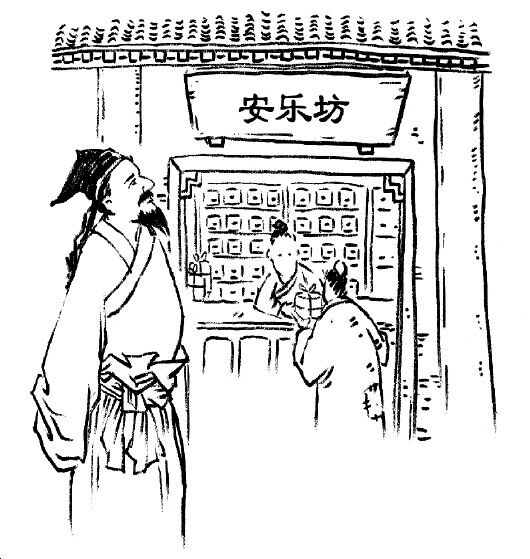Su Shi’s story of plague response as an official

Su Shi and the Anle House he founded in the Northern Song Dynasty photo: LEGAL DAILY
Su Shi’s life has an indissoluble bond with Hangzhou City, Zhejiang Province. He served as a government official twice there. In the year 1071, Su served as the assistant prefectural magistrate of Hangzhou. He took up a post again in the city 18 years later as the prefect. Riding on the crest of a successful career, Su was ambitious after his appointment and was ready to do great things. However, not long after he assumed office, a drought unexpectedly struck Hangzhou, which led to an agricultural failure. People were driven by hunger to eat the corpses of livestock and poultry. Famine and pestilence pervaded. The streets of the city were full of the poor seeking medical help. Despite the severity of the disaster, some drug shops stored up goods to sell at higher prices, profiteering from the plague.
In face of the situation, Su repeatedly appealed to the court for relieving ordinary people’s burden of rice specially supplied for the emperor’s kitchen and to ease the people’s suffering, and to administer its price by selling government-warehoused rice at a low price to ease economic pressure.
After observing the symptoms of the epidemic, Su found that people infected with the plague were mostly feeling cold in their hands and feet, having abdominal pain, diarrhea or fever, or having pain and swelling in their joints. Su made up a prescription called “Shengsanzi,” the ingredients of which were so cheap that a dose cost only one copper coin (about 0.04g silver). He then organized people in the street to set up large pots and boiled a lot of medicine-enriched porridge. Officials were sent to the streets together with doctors for treatment. All men and women, old and young, took a bowl of the porridge. The medicine’s effect was obvious and many got well and were saved.
The magical prescription “Shengsanzi” was a secret recipe Su obtained from his old friend Chao Gu when he was demoted to Huangzhou, Hubei Province. According to some records, this recipe used cheap medicine but was especially effective. For those badly ill, drinking a few doses would bring a speedy recovery, as they perspired, breathed more relaxed and ate with better appetite. Even for those who were not ill, a dose of the medicine was good for the spleen and stomach.
With Su’s efforts, the plague in Hangzhou was finally controlled. But the fight against the epidemic made Su realize that as Hangzhou is a pivotal hub for water and land transport, and with the frequent flow of people, more people typically died of the plague there than in other places, so there should be designated places to support epidemic prevention. So Su appropriated 2000 min (about 61,600g silver) from government funds, and he took the lead in donating 2000g gold for establishing a treatment house (similar to today’s hospital), which was named “Anle House.”
Su enacted many practical measures in Hangzhou, his response to the plague and founding of the treatment house being only one part. The ordinary people appreciated him for his kindness, and his portrait was hung in every household. His deeds were celebrated at people’s dinners, and many shrines were set up for Su.
At that time, the Hangzhou government appreciated Su’s founding of the treatment house, and they petitioned the imperial court suggesting that those doctors who had treated more than a thousand people well within three years be rewarded with “purple clothes” (representing the clothes of an official at that time). Those who treated the prescribed number of people well within three years would not only be granted purple clothes, but also a dudie, a monk or nun’s certificate issued by the government that grants exemption from local taxes and corvée, and it could be sold at a high price like a negotiable security. The imperial court accepted the request. Later on, the court fully affirmed Su’s acts and nationalized the Anle House, putting it under the management of the court. The house was later moved beside the West Lake and renamed Anji House.
This article was edited and translated from Henan Daily.
edited by BEI LE
